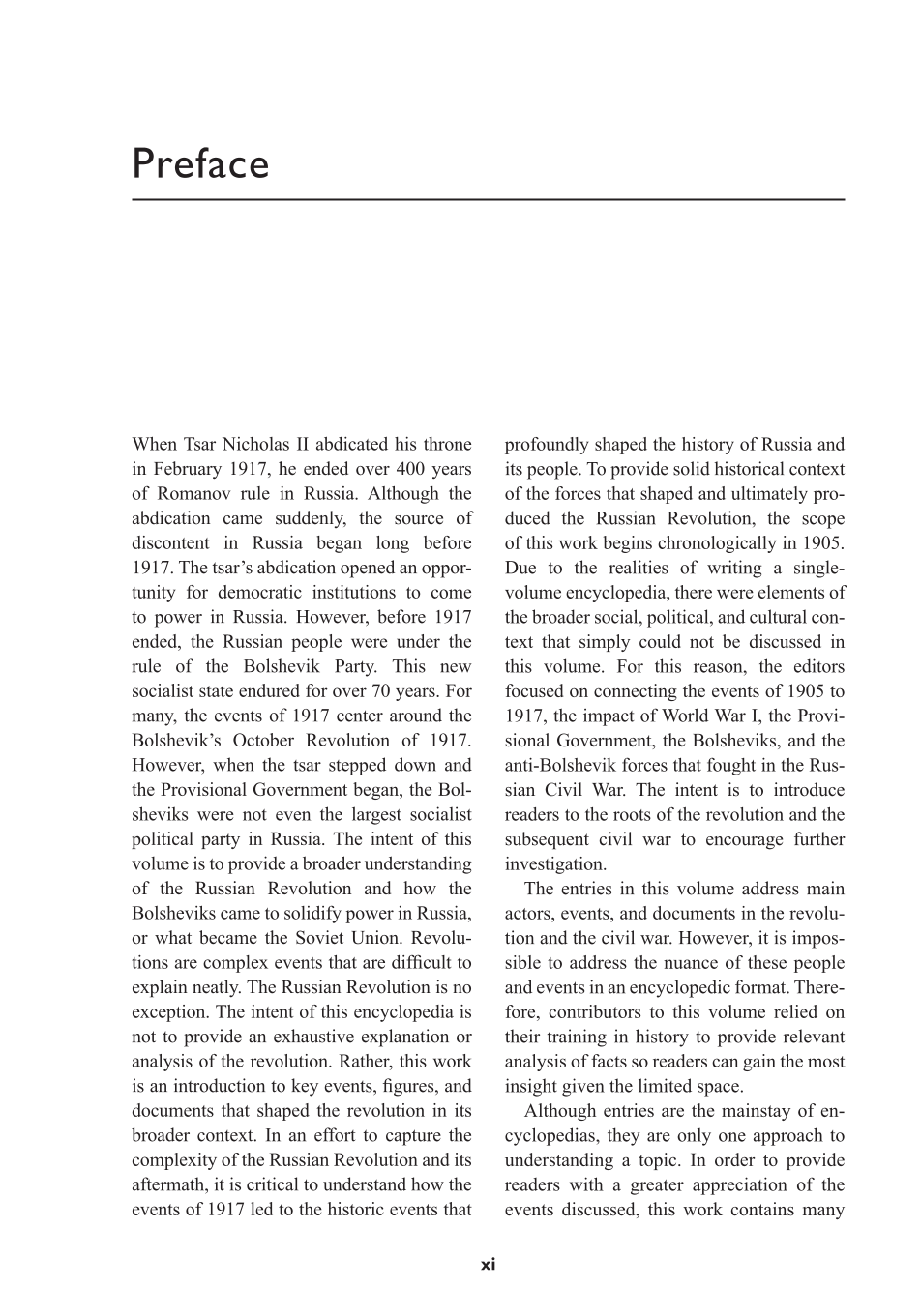xi
When Tsar Nicholas II abdicated his throne
in February 1917, he ended over 400 years
of Romanov rule in Russia. Although the
abdication came suddenly, the source of
discontent in Russia began long before
1917. The tsar’s abdication opened an oppor-
tunity for democratic institutions to come
to power in Russia. However, before 1917
ended, the Russian people were under the
rule of the Bolshevik Party. This new
socialist state endured for over 70 years. For
many, the events of 1917 center around the
Bolshevik’s October Revolution of 1917.
However, when the tsar stepped down and
the Provisional Government began, the Bol-
sheviks were not even the largest socialist
political party in Russia. The intent of this
volume is to provide a broader understanding
of the Russian Revolution and how the
Bolsheviks came to solidify power in Russia,
or what became the Soviet Union. Revolu-
tions are complex events that are difficult to
explain neatly. The Russian Revolution is no
exception. The intent of this encyclopedia is
not to provide an exhaustive explanation or
analysis of the revolution. Rather, this work
is an introduction to key events, figures, and
documents that shaped the revolution in its
broader context. In an effort to capture the
complexity of the Russian Revolution and its
aftermath, it is critical to understand how the
events of 1917 led to the historic events that
profoundly shaped the history of Russia and
its people. To provide solid historical context
of the forces that shaped and ultimately pro-
duced the Russian Revolution, the scope
of this work begins chronologically in 1905.
Due to the realities of writing a single-
volume encyclopedia, there were elements of
the broader social, political, and cultural con-
text that simply could not be discussed in
this volume. For this reason, the editors
focused on connecting the events of 1905 to
1917, the impact of World War I, the Provi-
sional Government, the Bolsheviks, and the
anti-Bolshevik forces that fought in the Rus-
sian Civil War. The intent is to introduce
readers to the roots of the revolution and the
subsequent civil war to encourage further
investigation.
The entries in this volume address main
actors, events, and documents in the revolu-
tion and the civil war. However, it is impos-
sible to address the nuance of these people
and events in an encyclopedic format. There-
fore, contributors to this volume relied on
their training in history to provide relevant
analysis of facts so readers can gain the most
insight given the limited space.
Although entries are the mainstay of en-
cyclopedias, they are only one approach to
understanding a topic. In order to provide
readers with a greater appreciation of the
events discussed, this work contains many
Preface










































































































































































































































































































